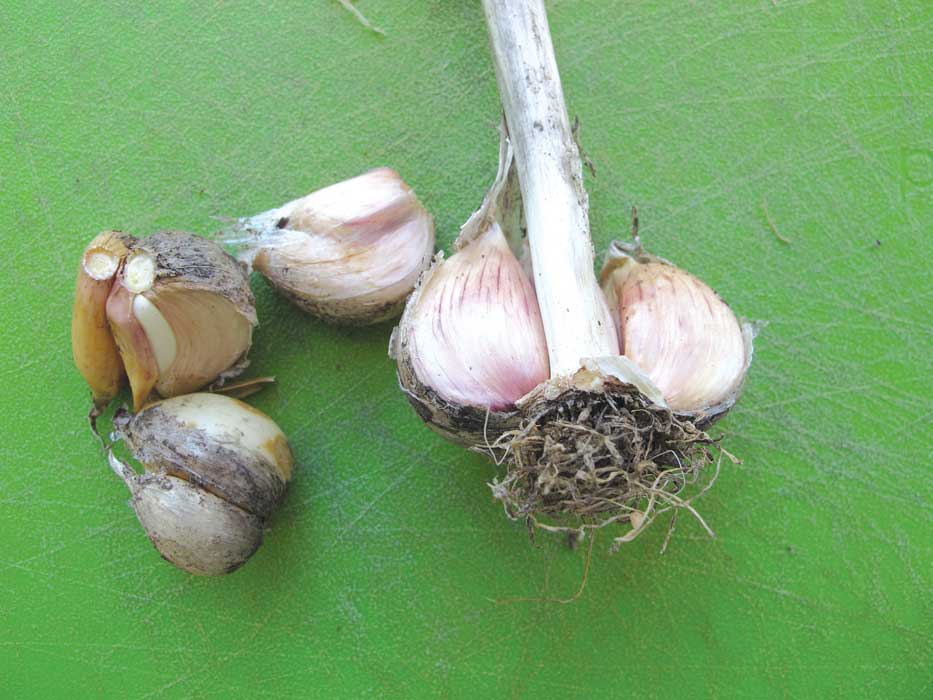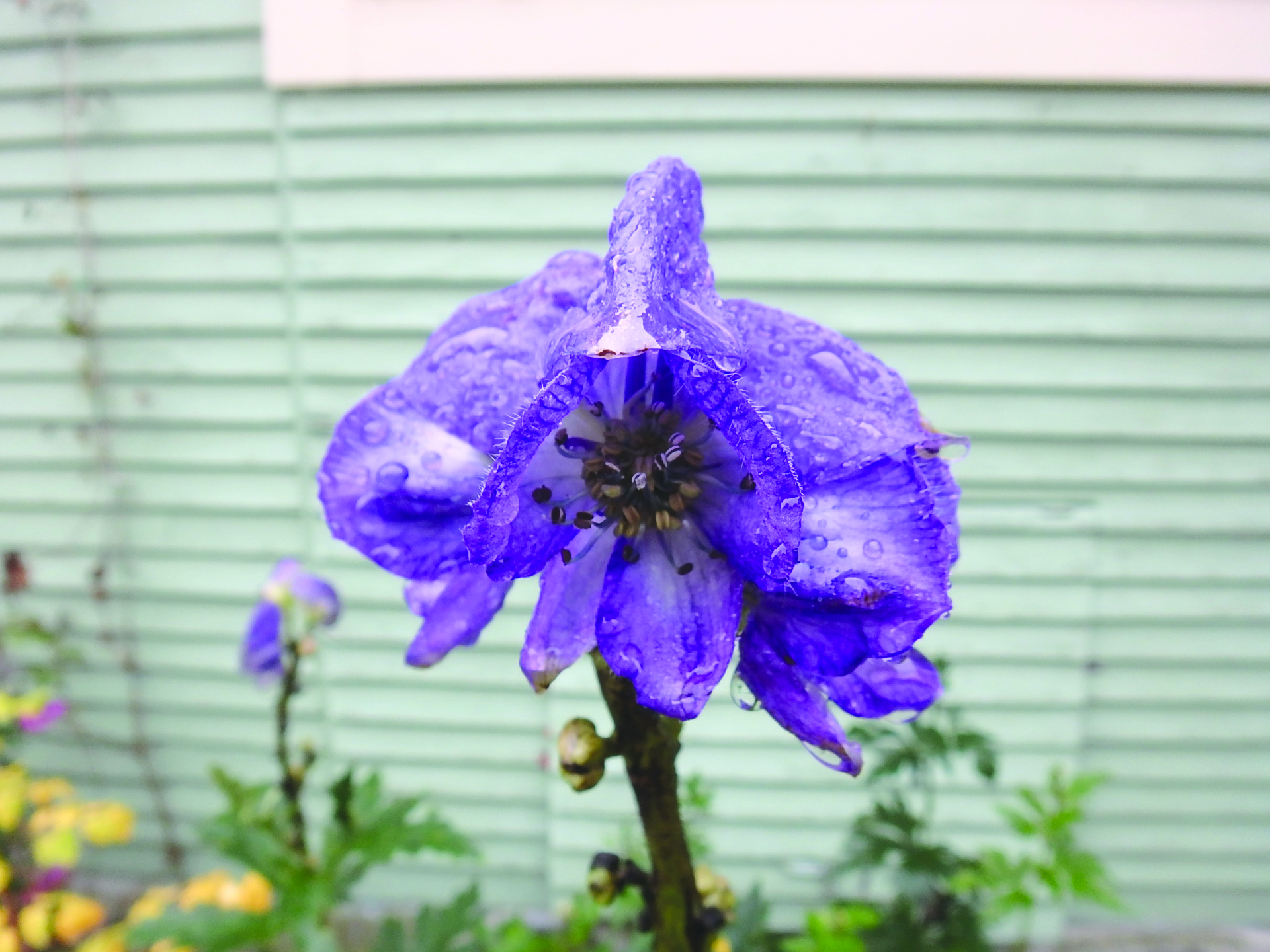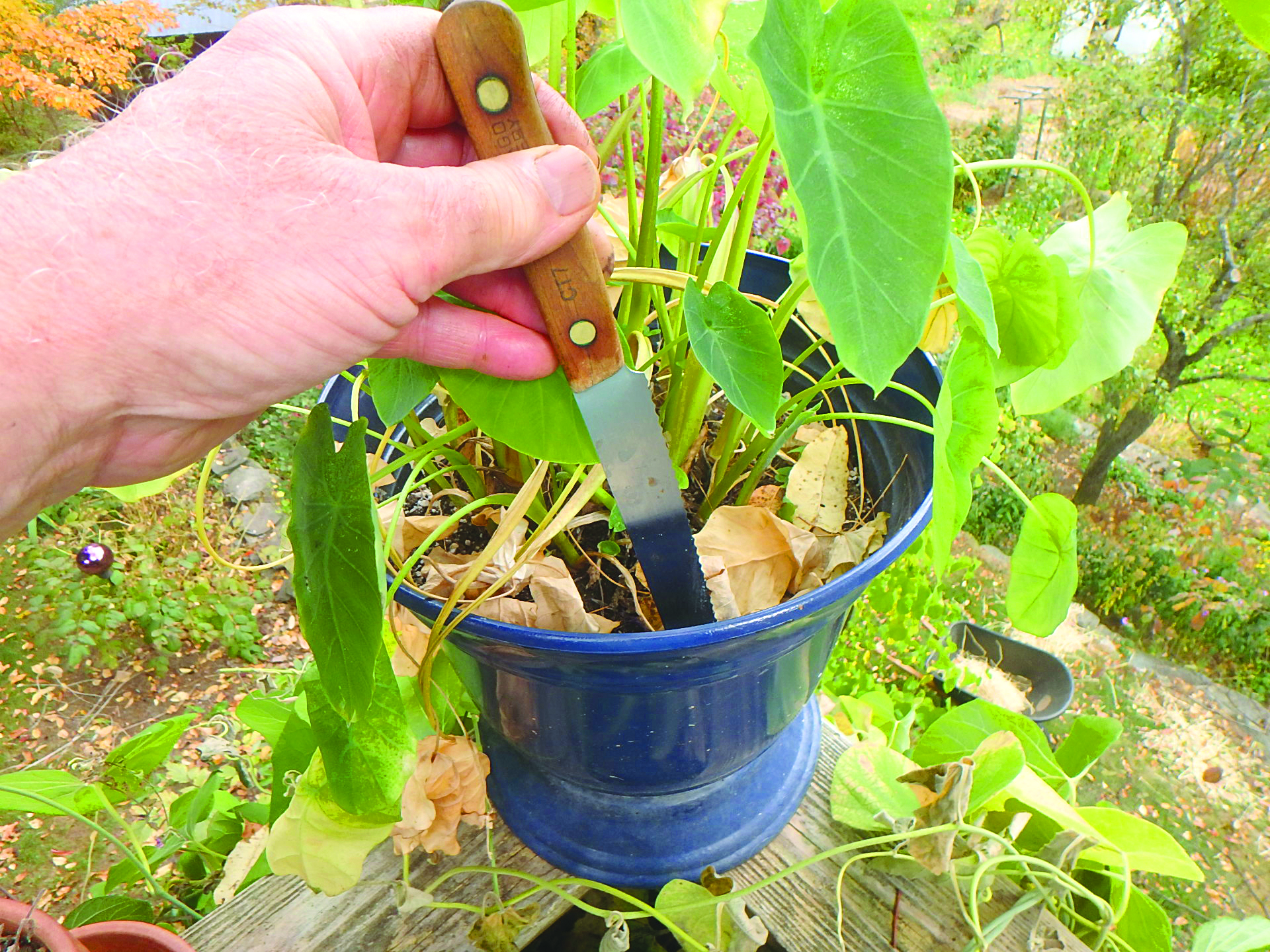Try Brussels sprouts, broccoli and other fall veggies

Granted, I have a vegetable garden mainly so I can have fresh, succulent tomatoes from July until some time in October. But I also have grown, I think, all vegetables that will grow in our climate. Right now, in late October, my saved tomatoes are all eaten, but I am enjoying plenty of other fresh veggies, and I am storing others for eating later.
For late fall, nothing beats Brussels sprouts. The trick to having good Brussels sprouts is to cut off the top of the plant in early September. I say do it on Labor Day, but even a bit later is fine. If you fail to do that, the plants will use all their energy to grow taller and taller. If you cut off the top three inches and it stops growing taller, it sends its energy to bulking up those cute little green “cabbages” that pop out of the stalk. Some years I’ve continued picking until late December, despite snow and cold.
Now I realize that for many people, a serving of Brussels sprouts is as appetizing as dead skunk left on the side of the road for a couple of days before serving. Those are people who probably were served overcooked sprouts in public schools. Mushy, grayish-green sprouts are not appetizing.
If you cook your sprouts “al dente,” you may change your opinion. Steam them until just tender enough to spear with a fork, or cut them in half and sauté in butter or olive oil and walnuts, and you may change your mind. I happen to like steaming them, then sprinkling Marukan brand seasoned gourmet rice wine vinegar over mine — tasty, and without the calories of the butter preferred by many.
Kale gets tastier as the season goes on. A few hard frosts sweetens it up, and if the deer don’t get it after snowfall, I often have it until Christmas. I like it in a breakfast smoothie: In a blender I put two leaves of kale with midribs removed, a banana, a cup of orange juice and a cup of water, some fresh ginger (to taste), the juice of half a lime, and some frozen blueberries or raspberries from the garden and stored in the freezer.
Kale can also be used for salad. Our friend Eliza Bergeson makes a great kale salad: She removes the midrib and chops the kale. She then massages it for about five minutes with a dressing of olive oil and lemon. She adds honey mustard, salt and pepper. The massaging makes the kale tender and works in the dressing. She adds feta cheese crumbs, dried cranberries, walnuts and fresh red peppers for color.
My broccoli continues to produce side shoots, despite the frosts. If you keep on cutting them off, they keep on flowering. Some years I grow non-heading broccoli relatives. One is called piricicaba, the other Happy Rich. Neither produces a big head, but both produce lots of little florets and persist well into the fall. I get seeds from Johnny’s or Fedco and start them in April, as these are not readily available as starts in most garden centers.
I just harvested a five-gallon pail of celery root, or as it is often called, celeriac. This is a celery relative that is grown for its roots, not stems. The leaves look and smell the same, but celeriac does not produce edible stalks. I clean and chop celeriac roots and chop them to use in soups and stews. It has a nice celery flavor.
I start celeriac in March by seed indoors. It is a slow grower at first, but once in the ground it takes off if in moist soil and full sunshine. Spacing is important, too. Crowd celeriac and you’ll get little. This summer I spaced them six inches apart in three rows eight inches apart in one wide bed, and they did well. I watered in dry times.
I also just harvested a five-gallon pail of leeks. Leeks are great, in my book, because you can use them in lieu of onions when cooking, and unlike onions, you can freeze them.
Leek and potato soup is one of my fall favorites. I just made some, and here is what I did. I started by dicing and frying two or three strips of thick-cut bacon in a large cast iron, enameled pot. Of course, vegetarians can substitute butter instead. Then I added some olive oil and four cups of potatoes, cut into half-inch cubes. I browned the potatoes a little, then added four cups of leeks. Since I am rich in celeriac, I chopped up a whole one and added it to the mix.
Then I added eight cups of water and simmered slowly. I added 1½ teaspoons of a dried herb called herbes de Provence. That is a mix of various Mediterranean spices (savory, marjoram, rosemary, thyme, oregano and lavender). And I added a couple of tablespoons of vegetarian vegetable broth powder (Seitenbacher brand) to give some added flavor. Then I added a handful of fresh chopped parsley.
I cooked the soup until the potatoes were done. I used a red-skinned potato I grew this year, one called Fenway Red. It is a productive potato and holds together well in a soup. Just don’t overcook it. I like a milky leek and potato soup, but don’t like to cook the milk, so I just added a quarter cup to each bowl at serving time. Yum!
As with any soup, I vary my leek and potato recipe whenever I make it. Sometimes I add dried cherry tomatoes or peas. Kale would be good — it goes well with potatoes at my St. Patrick’s Day meal, colcannon. That’s the great thing about fresh vegetables. You can’t go wrong.
So when you plan your garden for next year, be sure to grow some veggies that survive frost and are tasty on a cold fall night.
Featured Photo: Leeks are easy to grow and a good substitute for onions when cooked. Courtesy photo.





